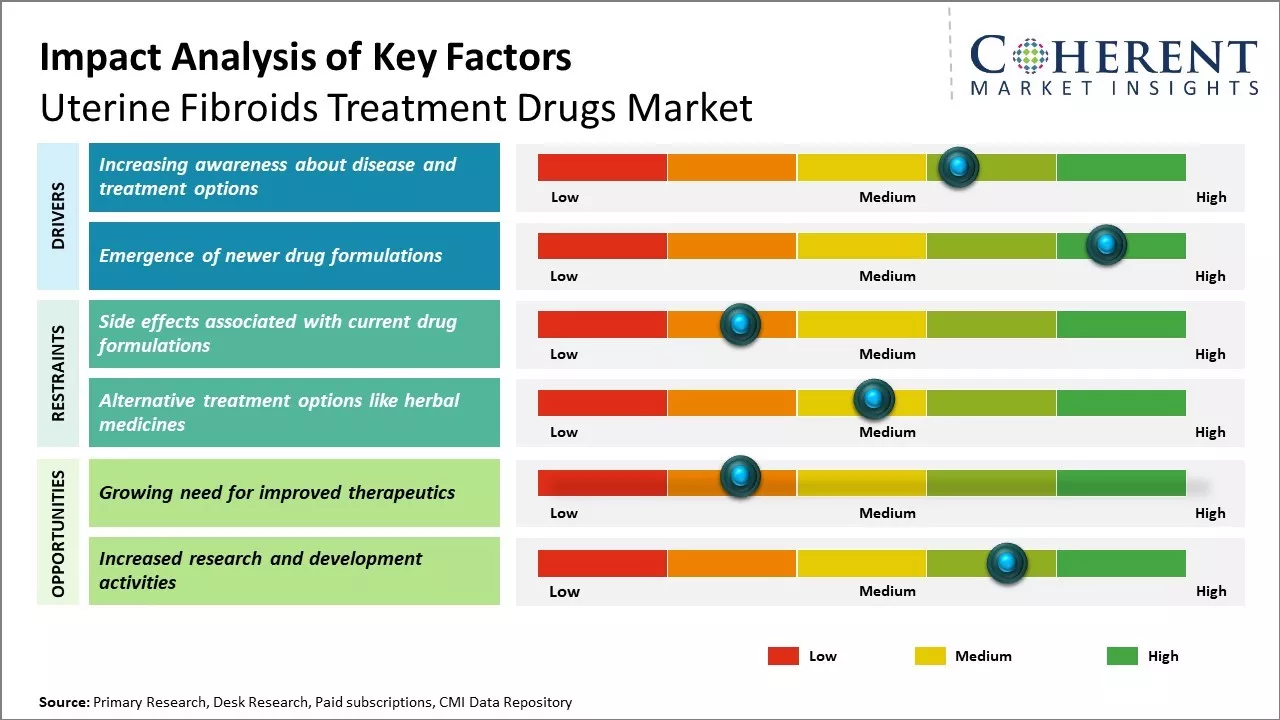The uterine fibroids treatment drugs market is estimated to be valued at USD 2.02 Bn in 2025 and is expected to reach USD 3.49 Bn by 2032, growing at a compound annual growth rate (CAGR) of 8.1% from 2025 to 2032.

To learn more about this report, Request sample copy
Over the past decade, the uterine fibroids treatment drugs market has witnessed steady growth. Key factors, such as the rising prevalence of uterine fibroids among women, growing awareness about disease treatment, and availability of various treatment options, have been driving the market growth. However, high treatment costs and side effects associated with long-term usage of drugs are expected to hamper the market growth. Meanwhile, the emergence of innovative drugs with better efficacy and safety is expected to create lucrative opportunities for market players over the coming years.
Increasing awareness about disease and treatment options
With greater awareness about uterine fibroids, its signs and symptoms, and available treatment options, more women are seeking medical help for managing this common condition. Various government and non-government organizations regularly conduct awareness programs and campaigns to educate women on fibroids and the various management approaches. They provide information about the different types and severity levels of fibroids, ways to diagnose fibroid types, and suitable treatment paths. This enables women to understand their condition better and make informed decisions. Also, with widespread access to internet and health portals, patients can easily lookup disease conditions and therapies. Drug makers too run branded awareness initiatives to promote their approved drugs. As more women get informed about this widespread women’s health issue that can impact quality of life, the demand for prescription medications and minimally invasive procedures is growing. This awareness tailwind is working in favor of the uterine fibroids treatment drugs market.
Joining thousands of companies around the world committed to making the Excellent Business Solutions.
View All Our Clients